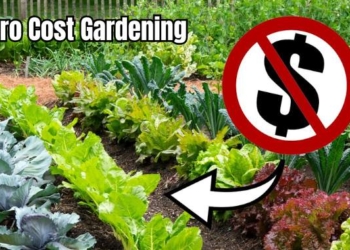Video Source: Plastic Soup Foundation
By Dr. Joseph Mercola | mercola.com
STORY AT-A-GLANCE
- A number of chemicals found in plastic products are known to act as endocrine disruptors. Some of the most pervasive and well-known include phthalates and bisphenol A (BPA)
- As the harms of BPA have become more widely known, many companies have started replacing it with other chemicals. However, these replacement chemicals also have no safety record, and as time goes on, we’re finding they’re just as hazardous as BPA
- A recent study showed that 97.5% of children and adolescents had detectable levels of BPA in their urine; 87.8% had BPS, and 55.2% had BPF. All three chemicals correlated with an increased risk for obesity, even after the researchers controlled for caloric intake
- A scientific review found BPB has endocrine disruptive effects; it affected reproductive function, damaging sperm and lowering egg production, lowered testosterone production and had estrogenic activity, “similar to or greater than BPA”
- For the second year in a row, The Coca-Cola Co. was found to be the most polluting brand in a global audit of plastic trash. Coca-Cola is responsible for more plastic litter than the next top three polluters combined
A number of chemicals found in plastic products are known to act as endocrine disruptors. Some of the most pervasive and well-known include phthalates and bisphenol A (BPA). Being similar in structure to natural sex hormones, these chemicals interfere with the normal functioning of those hormones.
This is particularly problematic in children who are still growing and developing, as the glands of your endocrine system and the hormones they release influence almost every cell, organ, and function of your body.
Your endocrine system as a whole is instrumental in regulating mood, growth and development, tissue function and metabolism, as well as sexual function and reproductive processes. And, endocrine-disrupting chemicals have in fact been linked to a number of reproductive health problems.
In the video1 above, Pete Myers,2 Ph.D., an adjunct professor of chemistry at Carnegie Mellon University and founder, CEO and chief scientist of Environmental Health Sciences, talks about what we know about plastic chemicals and their impact on the human endocrine system.
According to Myers, there are evidence plastic chemicals are harming the health of future generations through intergenerational endocrine disruption, so clearly, this is no small concern.
Interestingly, Myers attributes the premature birth of his own granddaughter to wildfires that took place in the months before the delivery in the area where his daughter lived. As reported by Environmental Health News:3
“Many homes, full of plastics, burned during the fire, releasing contaminants such as bisphenol-A (BPA) and phthalates that are linked to the ‘very condition that forced that premature birth,’ [Myers] said.”
Myers also points out that no plastic in existence has ever been thoroughly tested for safety, and that the testing that is used is based on “16th-century principles.”
To address the known and unknown harms of plastics, Myers is calling for redesign to make sure the plastic is non-toxic, and regulatory reform to account for the fact that even low doses may cause harm.
Health Effects Associated With Phthalates and BPA
Phthalate exposure has been linked to a wide range of health problems, including but not limited to:
- Birth defects4 and miscarriage5
- Low sperm count6,7
- Polycystic ovary disease8
- Early or delayed puberty9
- Autistic behavior,10 reduced IQ and impaired brain function in children11
Similarly, BPA, which mimics the hormone estrogen, has been linked to:
| Neurological perturbations due to neurotoxicity12 |
| Hyperactivity, increased aggressiveness, and impaired learning |
| Increased fat formation and risk of obesity in both children13 and adults14 |
| Altered immune function15 |
| Preterm birth16 |
| Hormone-associated cancers17 |
| Disruption of female sex hormone production,18 ovarian toxicity19 and reduced fertility due to reduced viability of eggs20 |
| Stimulation of prostate cancer cells, increased prostate size, decreased sperm production and hypospadias21 (penis deformation) |
| Heart disease22 |
| High blood pressure23 |
| Reduced efficacy of chemotherapy treatment24 |
| Erectile dysfunction25 |
According to a report by the World Health Organization and the United Nations Environment Program titled “State of the Science of Endocrine Disrupting Chemicals,”26 issued in 2014, endocrine-disrupting chemicals (EDCs) may need to be banned across the board to protect the health of future generations.
Similarly, an Endocrine Society task force issued a scientific statement27,28 on EDCs in 2015, noting that the health effects of hormone-disrupting chemicals are such that everyone needs to take proactive steps to avoid them.
EDCs like BPA and phthalates are particularly concerning for pregnant women and young children, as they can interfere with normal physiology and maturation even in extremely minute amounts.
BPA Substitutes Are Just as Hazardous
As the harms of BPA have become more widely known, many companies have started replacing it with other chemicals. However, these replacement chemicals also have no safety record, and as time goes on, we’re finding they’re just as hazardous as BPA.
This includes bisphenol S (BPS), bisphenol F (BPF) and bisphenol B (BPB). Judging by their names alone, you can tell these chemicals are in the same family as BPA, and as noted by Environmental Health News,29 “Replacing BPA with similar chemicals does nothing to mitigate the harm chemical exposure has on our health.”
For example, a recent study measuring BPA, BPS and BPF levels in children and adolescents found 97.5% had detectable levels of BPA in their urine; 87.8% had BPS, and 55.2% had BPF.
All three correlated with an increased risk for obesity, even after the researchers controlled for caloric intake.30 As noted by lead author Melanie Jacobson, a research scientist at NYU School of Medicine:31
“Although diet and exercise are still understood to the main drivers of obesity, this research suggests that common chemical exposures may also play a role, specifically among children.”
Another scientific review,32 published October 16, 2019, found BPB (just like BPA) has endocrine disruptive effects. Studies looking at subchronic intake found it affected reproductive function, damaging sperm and lowering egg production.
Others found it lowered testosterone production and had estrogenic activity, “similar to or greater than BPAs.” According to the reviewers, “The available in vivo, ex vivo and in vitro data … coherently indicates that BPB meets the WHO definition of an endocrine-disrupting chemical currently used in a regulatory context.”
The take-home message from this is that “BPA-free” labels are not a guarantee that the plastic in question is free of EDCs. Chances are they simply replaced BPA with one of the other bisphenols, all of which are likely to have similar endocrine-disrupting effects.
We’re Drowning in Plastic Waste Unnecessarily
When we look at plastic pollution, plastic bags, plastic food packaging, and bottled beverages are among the top offenders. In the CBC News Marketplace special report, “Raging Against Plastic,” the reporter takes an in-depth look at how grocery stores and food manufacturers are contributing to the plastic pollution problem by wrapping every conceivable item in nonbiodegradable plastic.
Eliminating some of this unnecessary packaging could go a long way toward reducing plastic waste, and it can be done. “Raging Against Plastic” features Andrew Thornton, owner of Thornton’s Budgens, a local U.K. grocer, whose store went plastic-free in just 10 weeks.
The products affected by the store’s plastic ban include everything from fresh produce to eggs, fish, bread, cheese, and packaged foods. The store even sells plastic-free bacon packaged in paper instead. They also use a plant-based cellulose film as an alternative to plastic wrap. It looks and acts like plastic, but it’s not. The cellulose is biodegradable, so you can put it in your compost bin.
Not only is Budgens helping curb plastic waste, but it’s making more money, too. “We didn’t set out to do it for commercial reasons, but there is a commercial benefit,” Thornton told Marketplace.
To achieve its plastic-free goal, the store worked with Frankie Gillard of the environmental group A Plastic Planet, who points out that big supermarkets have the power to get major brands to switch to more sustainable packaging methods:
“You basically say, ‘We're going to delist your product otherwise.’ They have the power to make or break a brand. So, of course, they have the power to say how it should be packaged.”
Beverage manufacturers could also make a very big dent — not just in pollution but also in adverse health effects — were they to revert back to inert and easily recyclable glass bottles.
Many companies have promised to tackle plastic pollution, yet virtually nothing is actually being done. One glaring example is The Coca-Cola Co. Last year, James Quincey, president and CEO of The Coca-Cola Co., announced a “World Without Waste” campaign in which the company promised to “collect and recycle the equivalent of every bottle or can it sells globally by 2030.”33
In reality, the facts suggest Coca-Cola is doing next to nothing to reach its stated goals — especially in poorer countries.34 The effects of Coca-Cola’s pollution are illustrated in raw detail in a 2019 documentary by the German public broadcaster DW, “Plastic Tide: Choking on Coke.”35
It’s a riveting exposé, showing how Coca-Cola deceives customers and environmentalists about its plastic pollution. I will discuss that documentary in another article in the near future.
Coca-Cola Named ‘Most Polluting Brand’
Up until the early 1980s, Coke was in many areas still sold in glass bottles for which the customer paid a deposit. You got your deposit back when you returned the empty bottles.
Coca-Cola’s switch to plastic bottles that required no deposit and no return effectively outsourced the problem and the costs of pollution to consumers and taxpayers — and it shows. As reported in an October 2019 article in The Intercept:36
“Coca-Cola was found to for the second year in a row to be the most polluting brand in a global audit37 of plastic trash conducted by the Break Free From Plastic global movement. The giant soda company was responsible for more plastic litter than the next top three polluters combined …
After Coca-Cola, the next biggest contributors to the plastic pollution in the audit were Nestle, PepsiCo, Mondelez International — purveyor of snack brands like Oreo, Ritz, Nabisco, and Nutter Butter — and Unilever …
Coke was the top source of plastic in Africa and Europe and the second largest source in Asia and South America. In North America, the company responsible for the most plastic found in the cleanups was Nestle, followed by the Solo Cup Company … and Starbucks. Coca-Cola ranked fifth among the companies responsible for plastic waste in North America.”
Coca-Cola Undermines Recycling Efforts
In its response to the Break Free From Plastic report, Coca-Cola claims it is “working to address this critical global issue, both to help turn off the tap in terms of plastic waste entering our oceans and to help clean up the existing pollution,” and that it is “investing locally in every market to increase recovery of our bottles and cans …”38
Coca-Cola also says it’s investing in new waste reduction technologies such as “enhanced recycling technologies that allow us to recycle poor quality PET plastic.”
However, while Coca-Cola has worked hard to develop and maintain an eco-friendly image with promises to reduce plastic waste and improve recycling, the company’s behavior in the real world suggests these are mostly empty promises.
Importantly, the company has repeatedly been caught working against efforts to reduce plastic pollution. It’s even been caught undermining recycling efforts. As reported by The Intercept October 18, 2019:39
“Audio from a meeting of recycling leaders … reveals how the soda giant’s ‘green’ philanthropy helped squelch what could have been an important tool in fighting the plastic crisis — and shines a light on the behind-the-scenes tactics beverage and plastics companies have quietly used for decades to evade responsibility for their waste … One possible avenue for boosting recycling rates — a bottle bill — was off the table.”
Bottle Deposit Laws Improve Recycling Rates
Bottle bills, also known as deposit laws, are basically a return to the practices of times past: Companies are required to add a deposit charge to their bottled beverages, which is refunded when the bottle is returned. According to The Intercept:40
“States with bottle bills recycle about 60 percent of their bottles and cans, as opposed to 24 percent in other states. And states that have bottle bills also have an average of 40 percent less beverage container litter on their coasts, according to a 2018 study41 of the U.S. and Australia …”
However, these kinds of bills also place a portion of the responsibility and cost of recycling on the companies selling the bottles. Undoubtedly, this is why Coca-Cola and other beverage makers keep fighting against them whenever they come up.
So, while Coca-Cola promises to improve recycling and help cut down on plastic waste, it keeps working in the opposite direction — using virgin plastic (so-called nurdles, which are a key plastic pollutant) to make bottles rather than using recycled materials, and fighting against any and all legislation that might force it to clean up its act or pay a price.
Coca-Cola Caught Weakening Zero Waste Message
The Intercept also details how Coca-Cola has managed to water down “zero waste” messages across Europe:42
“Hundreds of cities and towns have recently committed to becoming ‘zero waste’ cities … The zero waste movement focuses on a hierarchy that puts the reduction and conservation of plastic and other materials above recycling and emphasizes the reduction of waste at its source.
Yet last October, zero waste advocates noticed that another effort had emerged with the same name but very different goals.
The new zero waste push didn’t have the same comprehensive approach to reducing waste that theirs did, and seemed designed ‘to confuse people on the zero waste hierarchy,’ said [Alexandra] Aubertin [founder of Zero Waste Montenegro].
It was ‘telling people the solution is recycling. But that’s not what the zero waste hierarchy is all about.’ Aubertin was dismayed to learn that the new weakened ‘zero waste’ messaging was in fact coming from the world’s biggest plastic polluter: Coca-Cola.”
Plastic Pollution Affects Entire Food Chain
It’s estimated that a plastic bottle can take 450 years to break down in a marine environment,43 but even then, it never fully goes away. It simply breaks down into smaller pieces that may persist in the environment indefinitely. These tiny pieces of plastic, commonly known as microplastics, also migrate up the food chain as they’re consumed by fish and other marine life.
In 2017, a malnourished and dying whale found off the coast of Norway had to be euthanized. The subsequent autopsy revealed 30 plastic bags and a large amount of plastic packaging waste in its stomach and intestines, which was causing blockages, malnutrition and pain.44
Like the poor marine animals, this microplastic pollution makes its way into your body as well. Microplastics have been found not only in seafood but also in sea salt and drinking water (both tap water and bottled water45).
A study commissioned by the World Wildlife Fund found people, on average, consume the equivalent weight of one credit card — about 5 grams — of plastic each week.46
While the full effects of this ingested plastic are unknown, we do know that endocrine-disrupting chemicals in the plastic can wreak havoc even at very low levels. As Myers told Consumer Reports, “There can be no effect.”47
How to Reduce Your Plastic Exposure
It can be extraordinarily difficult to avoid plastic, and it’s probably not possible to avoid all exposure, considering the exposure routes include air,48 dust,49 water, food, food packaging and bottles, flooring50 and any number of household items. Even cashier receipts are a source of BPA51 that can enter your bloodstream through your skin.
However, you can certainly minimize your exposure by taking a few common-sense precautions. One basic strategy is to opt for products sold in glass containers rather than plastic whenever possible. Another is to look for plastic-free alternatives to common items such as toys and toothbrushes. Other suggestions offered by Consumer Reports include: 52
- Drink filtered tap water rather than bottled water — Bottled water tends to have far higher amounts of plastic debris than tap water. I recommend filtering your tap water, not only to get rid of potential plastic debris but also to avoid the many chemical and heavy metal pollutants found in most water supplies.
- Avoid reheating food in plastic containers — Instead, heat your food in a pot on the stove, an oven-safe pan or a glass container if using a microwave.
- Store foods in glass rather than plastic — Consumer Reports specifically warns against using plastic food containers marked with the recycle codes 3, 6 and 7, as these contain phthalates, styrene, and bisphenols.
- Ditch processed foods and takeout for fresh food — Most food wrappers and containers, including cans, contain plastic.
- Vacuum regularly — Microplastic and plastic chemicals are found in most household dust, which can end up being either digested or inhaled. Maintaining your home as dust-free as possible is therefore recommended, especially if you have young children that spend a lot of time on the floor. Ideally, use a vacuum cleaner equipped with a HEPA filter.
















